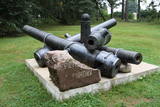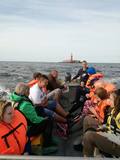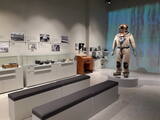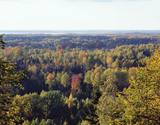| Нo | Название | Описание |
|---|---|---|
|
На острове Доле (крупнейший речной остров Латвии) находится жилое здание усадьбы Доле (построено в 1898 г.) – родовая собственность Левисов из Менара. В усадьбе Доле создан музей с богатейшей коллекцией экспонатов, повествующей о жизни людей на берегах Даугавы. В располагающемся рядом парке (этнографические постройки, пути миграций миног и лососей) находятся и пять уникальных пушек, которые были откопаны в Саласпилсе при строительстве нового стадиона. В этом месте в 1910 году находился лагерь военных сил Царской армии и был открыт памятник Петру I. Еще одна из найденных здесь пушек находится в самой экспозиции музея.
|
||
|
Находится на возвышенности, в красивом месте, на берегу Алуксненского озера возлу ул. Плескавас (Р 40). Памятник 20-го июня 1923-го года открыл Латвийский президент Янис Чаксте. Памятник построен по эскизу скульптора Я. Миесниекса. В центре памятника изображен щит со скрещенным мечом, а у основания памятника – надпись «За Латвию погибшим солдатам 7-го Сигулдского полка. 1919 – 1920». На другой стороне находится надпись «Лучше сложить свою голову, чем отдать нашу родину». В советское время (1953) памятник снесли. Его восстановили в 2009-м году. |
||
|
Организуются ознакомительные дегустации мидуса и мёда. Здесь можно приобрести разные продукты пчеловодства, свечи из натурального воска, мидус нескольких сортов. |
||
|
В музее можно послушать рассказ об истории шоколада, ознакомиться с процессом от получения до готовой продукции, а также в творческой мастерской самим приготовить и попробовать горьковато- сладкое лакомство. В магазинчике по соседству можно купить готовую продукцию. |
||
|
В созданном самим пейзажном хозяйстве скульптора по дереву появляются работы, которые объединяют камень и дерево. В поселке Ирлавас установлена работа ремесленника – ложка высотой 6,2 м. Экскурсия, заказ и покупка всевозможных деревянных изделий. |
||
|
Кафе находится на первом этаже в гостевом доме «Зитари» в городе Рое, на обочине дороги, в 500 м от моря. |
||
|
Piedāvā izbraucienu ar zvejnieku laivu līdz Kolkas bākai. Iespējama iepazīšanās ar zvejas procesu. Iepriekš saskaņojot, iespējams jūrā sagaidīt saullēktu vai saulrietu. |
||
|
This barrow is on the western side of the Dunduri meadows and was built on the parking lot of the former collective farm. From the second level of the tower, you will have an excellent view of the meadows all the way to the Džukste River and the Kauguri canal. There are livestock accustomed to life in the wild, although they will sometimes be quite distant. This is a bird-watching location from the springtime until the second half of the summer. |
||
|
Находится в 3 км к югу от дороги Вецумниеки – Илуксте. Для несведущего поиск месторасположения городища может вызвать трудности, так как указатели не установлены. И упомянутый далее Ступельский Большой валун не так-то просто найти во время вегетации. Гора Ступелю, высотой около 30 м, является одним из крупнейших городищ исторического края Селии. Результаты исследования сообщают, что впервые поселение было покинуто в начале нашей эры, а затем было заселено в эпоху позднегожелезноговека. Интересен тот факт, что в окрестностях городища добывалось и обрабатывалось железо. Находки заставляют предположить, что на этом месте находился один из ранних «городов» края. У подножья западного склона горы Ступелю находится Ступельский Большой валун, длиной 6,7 м, шириной 5,6 м, высотой до 2,7 м,выступающий надповерхностью земли объем которого составляет 35 м3. Возможно, что камень служил культовым местом. Во время археологических раскопок (конец 70-х годов 20 века) вблизи камня были найдены старинные предметы 10 - 13 века.
|
||
|
Andrupenes dabas takā var iepazīt sūnas, pārliecināties par sfagnu lielo ūdens uzsūkšanas spēju, gar laipas malām ieraudzīt apaļlapu raseni un purva dzērveni, apskatīt spilves, vaivariņus un purva vārnkāju, kā arī purva pasauli. Takas garums ~ 750m.
|
||
|
Molu (sākotnēji – pāļu rindas ar akmeņu krāvumiem) izbūve pie Sakas ietekas jūrā tika uzsākta 1878. gadā, lai nodrošinātu ostas darbību. 1929. gadā notiek molu pārbūve, pagarinot tos ar masīviem betona blokiem. Pēdējā rekonstrukcija notika 2010. gadā, pārveidojot molus par ērtu pastaigu un makšķerēšanas vietu, no kuras var vērot arī saulrietu. |
||
|
This exhibition features the Pļaviņas hydroelectric power plant as a unique architectural building with unique engineering elements. It is the largest producer of electricity in the Baltic States and one of the largest in
|
||
|
Находится на ул. Кунгу, д. 24.Одно из старейших зданий города - деревянный сруб с черепичной крышей, построенный во второй половине XVII века и прозванный в народе гостиницей мадам Хойер. Здесь в 1697 году во время путешествия «Великого посольства» в западную Европу останавливался (инкогнито) русский царь Петр I. Находящееся по соседству здание на ул. Кунгу, д. 26, является вторым старейшим жилым зданием Лиепаи (1699 г.) – жилой дом бургомистра города. Во время Северной войны здесь останавливался король Швеции Карл XII. Оба здания подлежат осмотру только снаружи. |
||
|
Atrodas Rucavas – Bārtas ceļa malā (pagrieziens uz Bārtas Romas katoļu baznīcu). Veltīts melioratoram Arvīdam Manfeldam – bijušā Liepājas rajona meliorācijas uzņēmuma priekšniekam kā pateicība no vietējiem iedzīvotājiem par ceļiem un tiltiem. |
||
|
Starp cilvēku un zirgu valda īpaša saikne, ne velti zirgs cilvēkam spēj būt gan draugs, gan palīgs, gan sabiedrotais dažādās dzīves situācijās. Saimniecība “Imanti” piedāvā braucienus zirga kamanās ziemā un ratos – vasaras sezonā. |
||
|
This cycling route will take you from Riga along the West coast of the Baltic Sea of Latvia and Lithuania. On the way the route passes the sea resort Jurmala with 19th century wooden archicture, the picturesque Abava river valley, geologicaly interesting steep banks of Jūrkalne, historically exiting city of Liepaja with great ambience and charming Kuldiga with the widest waterfall in Europe. In Lithuania the route goes through Palanga where Amber Museum is located and culminates at the National Park of the Curonian Spit with 60m high sand dune. |
||
|
Lielstraupes pils ir vienīgā Latvijā saglabājusies celtne, kur vienā ēkā ir apvienota viduslaiku pils un baznīca. Pils celtniecību uzsāka 1263. g. Apbūve ļoti cieta 17. un 18. gs. laikā, kā arī 1905. g. nemieru laikā. Ēku kompleksu atjaunoja 1909. g. pēc arhitekta V. Bokslafa projekta. Lielstraupes baznīcā atrodas vairāki mākslas pieminekļi - 17. gs. ērģeļu luktu un 18. gs. kanceles gleznojumi. 1944. g. dienamā uzstādīja mākslinieka S. Vidberga vitrāžas "Golgāta" un "Kristu dzimšana". Savukārt, pils tornī redzams vietējā pulksteņmeistara Aides darināts pulkstenis, bet uz baznīcas sienas - saules pulkstenis. Pils parkā ir jāaplūko 1744. g. no koka būvēto zvanu torni. 1938. g. baznīcā atklāta piemiņas plāksni 1. pasaules karā un Brīvības cīņās kritušajiem. No 1963. g. pilī darbojas narkoloģiskā slimnīca. Baznīca ir apskatāma dievkalpojumu laikā, bet pārējais ēku komplekss – no ārpuses. |
||
|
Līdz mūsdienām saglabājušās vairākas muižas ēkas, kas celtas grāfu Plāteru laikā. Muižas vecā pils, kas atrodas Grāfu Plāteru ielas malā - Jāņupītes krastā, celta 1759. gadā (baroks, Venēcijas arhitekts Antonio Parako). Pēcāk to pārbūvēja un pēc jaunās pils uzcelšanas ēkas pirmajā stāvā atradās Plāteru dzimtas vasaras rezidence, bet otrajā un trešajā stāvā bija iekārtota bibliotēka ar ~ 20 tūkstošiem vienību. Bibliotēka, kuras lielākā daļa bija pārvesta uz citiem grāfu īpašumiem, gāja bojā 1. pasaules kara laikā. Krāslavas muižas jaunās pils (Daugavas ielejas krasta augšdaļā) celtniecību uzsāka 1765. gadā (arhitekts Domeniko Parako), sākotnēji baroka, bet 18. – 19. gs. mijā pārbūvējot klasicisma stilā. Ēkā ir atklāti unikāli rokoko stila sienu gleznojumi ar Romas skatiem, kas pēc Polijas piļu analogiem tapuši 18. gs. 60. - 70. gados. Jaunajā pilī līdz 20. gs. 70. gadiem darbojās vidusskola. Tad pils tika “pamesta” un pārvērtās par graustu. Tagad veikti apjomīgi pils fasādes renovācijas darbi, un tā ieguvusi sakoptu veidolu. Pili ieskauj 18. gs. vidū veidots romantiskais ainavu parks – Grāfu Plāteru parks, kas stādīts Daugavas ielejas un to šķērsojošo gravu nogāzēs. Tajā atjaunota mākslīgā grota un lauva – pils sargs, kāpnes to vēsturiskajā vietā, parka celiņi, pagalms. |
||
|
Šajā tūrē pārsteigs lauku saimniecību daudzveidība un neparasti ražojumi. Apmeklēsiet vairākas saimniecības, kas ražo ekoloģisku produkciju, ko iespējams apskatīt, nogaršot un iegādāties. No Viļņas ceļš ved uz ekoloģisku kazkopības saimniecību, kur ražo 60 dažādus kazas piena sierus. Pēc tam apmeklējums etnogrāfiskā lietuviešu sētā, kur audzē zirgus un aitas. Pavadīsiet dienu Kauņā, apskatīsiet Nemunas upes ieleju ar Raudones (Raudonė) un Panemunes (Panemunė) pilīm. Pikniks lauku saimniecībā ar ozolzīļu kafiju, uz ugunskura ceptām pankūkām un vietējā mežā lasīto sēņu zupu. Ekoloģiska saimniecība Buivydai audzē gaļas liellopus un mellenes. Pa ceļam apskatīsiet Kuršu Kāpu, Jūras Muzeju ar Delfināriju un iecienītāko Kuršu Kāpas kūrorta pilsētu Nidu. Tālāk dosieties uz Latviju. Papes Dabas parkā apskatāmi savvaļas zirgi, etnogrāfiskais Ķoņu ciems ir sens piejūras zvejnieku ciems. Apskatot Liepāju, ir vērts iegriezties Liepājas tirgū. Tam ir vairāk kā 100 gadu sena vēsture un sezonas laikos šeit var iegādāties dārzeņus, augļus, zaļumus un ziedus no apkaimes lauku saimniecībām. Turpinot ceļojumu, apmeklējumi videi draudzīgā dārzkopības saimniecībā, kur audzē 130 šķirņu ābolus, vīna darītavā, kur gatavo vīnu no vietējiem augļiem un ogām, saimniecībā, kur pēc biodinamiskās lauksaimniecības principiem audzē pupiņas un zirņus, un gaļas lopu saimniecībā, kur ražo garšīgas desas. Turpinot ceļu, apskatīsiet skaisto Kurzemes viduslaiku pilsētu Kuldīgu ar ķieģeļu tiltu pār Ventas upi. Vides veselības saimniecībā baudīsiet zāļu tējas, iepazīsiet dažādus eko kosmētikas produktus, kas ražoti no tīrā dabas vidē ievāktiem augiem. Ceļā baudot Abavas upes senlejas skatus, nokļūsiet Sabiles vīna kalnā, kur tiek audzētas vīnogas vietējās vīna darītavas vajadzībām. Tālāk – Talsi, šarmanta mazpilsēta, kuras nomalē atrodas Latvijas Lauksaimniecības muzejs. Tūres noslēgumā apmeklējums saimniecībā, kur no pašu audzētiem augļiem un dārzeņiem gatavo sīrupus, ievārījumus un dārzeņu konservus. Ceļojuma galapunkts – Rīga. |
||
|
Latgales augstienes Rāznavas pauguraines augstākā un Latvijā trešā augstākā virsotne (289,3 m v.j.l.). Lielpaugura relatīvais augstums ir 86 m! Skatu torņa platforma ir šobrīd augstākais Latvijas punkts (323 m.v.j.l.), kas sasniedzams ar paša kājām! Liepu kalna apkārtne ir labiekārtota. |
||
























